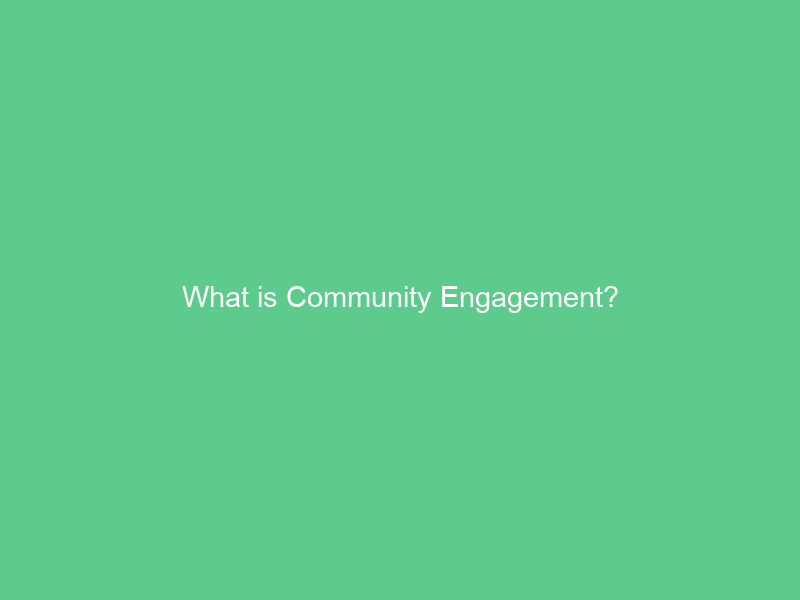Community engagement refers to a set of principles and strategies designed to enable individuals and communities to actively take part in solving the problems they encounter, while taking into account various contexts and capacities.
Accessibility and inclusivity are at the core of what makes an excellent learning environment, along with creating long-term relationships and making sure all voices are heard.
What is community engagement?
Community engagement is a two-way communication process aimed at building trust and understanding through mutual decision making models that benefit all involved parties. Community engagement works best when its practitioners identify stakeholders and provide them with relevant information, inviting them to discuss various matters or provide feedback. The ultimate aim is for all to benefit.
Community engagement includes both preparatory participation, when planners ask residents about the practices and values associated with an upcoming development project, as well as ongoing participation on existing ones. Furthermore, it involves making it easy for citizens to contribute as active partners by offering them convenient opportunities to make contributions and become active contributors.
Community engagement should take into account the local context. Approaches that ignore existing power dynamics could prove futile in reaching desired goals; for example, restricting participation to leaders and influential actors alone may result in poor decisions that do not enhance systems or policies. Therefore, having a solid base for managing community relations as well as an efficient stakeholder management platform are vitally important components.
Types of community engagement
An effective community engagement strategy must include multiple forms of interaction. Informative engagement refers to sharing information regarding plans and initiatives with local residents via newsletters, public meetings or social media updates.
Consultative engagement involves seeking feedback from community members about an issue or plan through surveys, public meetings and focus groups. Empowering engagement involves giving communities greater participation in decision making by including them on advisory panels or working groups; this may occur through ongoing participation or formal partnership agreements.
Engaging with communities requires understanding their unique needs and challenges – including cultural sensitivity and power imbalances – as well as being transparent in processes, decisions and feedback channels; otherwise community trust could quickly diminish; this explains why effective community engagement requires both time and resources investments.
How to engage your community
To successfully engage the community, begin by identifying all your stakeholders and their roles within the project. This will allow you to define a scope for engagement that ensures all relevant parties participate in decision-making processes.
Use specialized software tools to analyze the relationships within your stakeholder network and pinpoint key nodes, providing data that will aid in tailoring communication and engagement efforts accordingly.
Create a system that rewards participation and builds brand loyalty among community members. For instance, give community members shoutouts when they reach milestones or complete courses – you could even make this fun by assigning graduate animals, numbers or food groups!
Make sure that all content and engagement reaches your audience – this includes posts, conversations and even how you respond to direct messages (DMs). A stakeholder relationship management (SRM) tool like Tractivity allows you to centralise all your engagement data and communication in one location while keeping a log of stakeholder interactions.
How to engage stakeholders
Community engagement is all about developing relationships with stakeholders and listening to what they have to say. From hosting public meetings and events through to using social media or conducting surveys, early and frequent involvement of your stakeholders in your process is essential to shaping public perception and resolving any potential conflicts before fully-formed project plans emerge.
Engaging your stakeholders makes them feel valued, which in turn encourages their continued participation in future projects. Employing multiple methods of engagement is important; some stakeholders might have access limitations or preferences (for instance internet connectivity), whereas other may prefer face-to-face meetings or public exhibitions as better methods. Your organisation’s budget and resources may limit what activities can be pursued – for example using Maptionnaire can assist with creating engaging spatial questionnaires to support preparatory planning, as well as engagement portals to promote informative participation.

